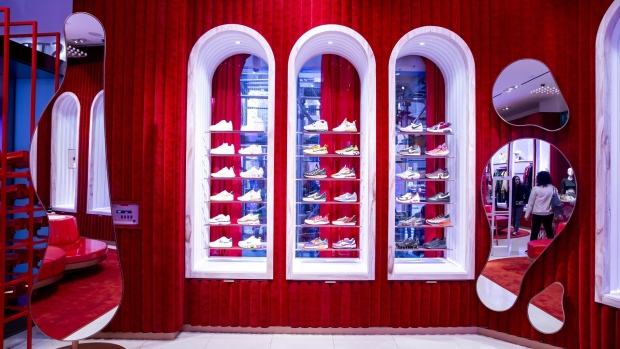Dec 19, 2019
Nike earnings disappoint investors after stock hits record
, Bloomberg News

After hitting a record high on Thursday, Nike Inc. is finding it harder to keep investors happy.
Despite posting quarterly results that sailed past Wall Street estimates, the shares dipped in late trading, suggesting some investors were looking for an even bigger upside surprise.
Fiscal second-quarter profit rose to 70 cents U.S. a share, Nike said, beating 58-cent average of analysts’ estimates. The company overcame headwinds from tariffs that were stiffest in the period, boosting sales by 10 per cent to US$10.3 billion and topping projections.
“Our brand is connecting deeply with consumers everywhere,” Chief Executive Officer Mark Parker, who will step down next month, said on a conference call. “Our innovation is helping athletes prove that there are no limits. We’re challenging the conventions of retail at every term.”
Nike executives said they expect third-quarter revenue to grow by a high single-digit percentage, and reiterated the same expectation for the full year. The company expects third quarter gross margin to remain flat year-over-year, at around 45.1 per cent.
Parting Ways
While Nike routinely beats profit estimates, its shares don’t always follow suit. The company has exceeded estimates in every quarter but one going back to mid-2012, but the stock has declined about a third of the time.
Shares of Nike fell as much as 3.1 per cent in extended trading before recovering somewhat. The stock touched an all-time high in regular trading Thursday, closing at US$101.15.
Two possible negatives: Profit margins and inventories. Nike’s gross margin expanded to 44 per cent, short of estimates of 44.1 per cent. The margins have grown as the company focuses more on selling direct to its customers.
Chief Financial Officer Andy Campion said on the call the margin numbers were the result of a lot of factors, many not directly tied to product. Tariffs cut the figure by 40 to 50 basis points, while investments in the company supply chain and apparel distribution also added to the pressure, along with currency fluctuations.
“There are a lot of puts and takes within margin in any given quarter,” Campion said. “I would tell you not to focus on a quarterly margin expansion result, especially in these times, as indicative of a trend.”
Rising Inventory
Inventory rose 15 per cent to US$6.2 billion, an all-time high. Nike said that jump was a result of strong global demand, as well as a higher rate of on-time deliveries from factories. The Bloomberg MODL estimate for inventory growth was 6.1 per cent.
It was a busy quarter for Beaverton, Oregon-based Nike. The company named a new CEO, recently sold the surfing brand Hurley, and also drew criticism from Vice President Mike Pence over its business in China.
In October, the company shuttered its elite Oregon Project distance running team after coach Alberto Salazar was suspended for doping violations. Weeks later, a number of former Nike runners claimed they were verbally and emotionally abused by Salazar while with the Oregon Project.
Analysts remain optimistic about Nike’s digital transformation, specifically its push to sell more product directly to consumers, without a retail middleman. In 2019, Nike Direct sales grew twice as fast as its wholesale business, and now account for about 32 per cent of all sales. That number should continue to grow.
Central to that growth is the proliferation of the Nike app, which is at the heart of Nike’s new stores, products and acquisitions. In its first quarter, the company expanded its app to 13 countries in Europe, the Middle East and Africa; last quarter, it launched in China.
In November, Nike said it would stop selling products on Amazon, the end of a two-year pilot program. That change comes amid a broader move by Nike to limit its retail partners -- opting instead to work more closely with a handful of select companies, and put more resources behind it’s direct-to-consumer business.
Over the quarter, Nike Direct sales grew 17 per cent. Within that category, digital sales were up 38 per cent. “We are extending Nike’s digital advantage, and we are positioning Nike for even greater competitive separation over the long term,” Campion said.




